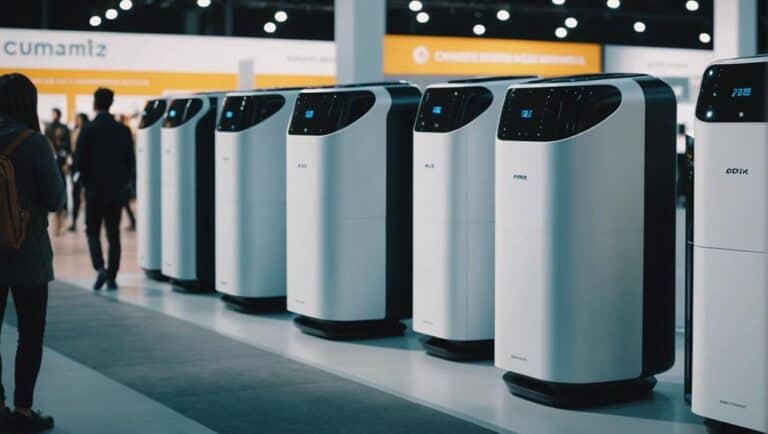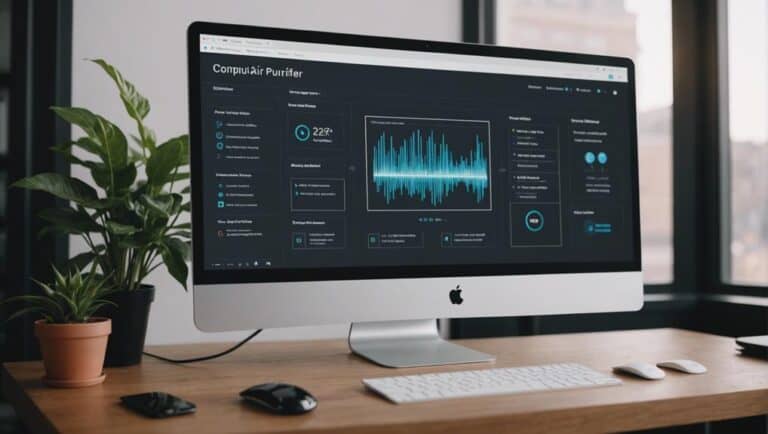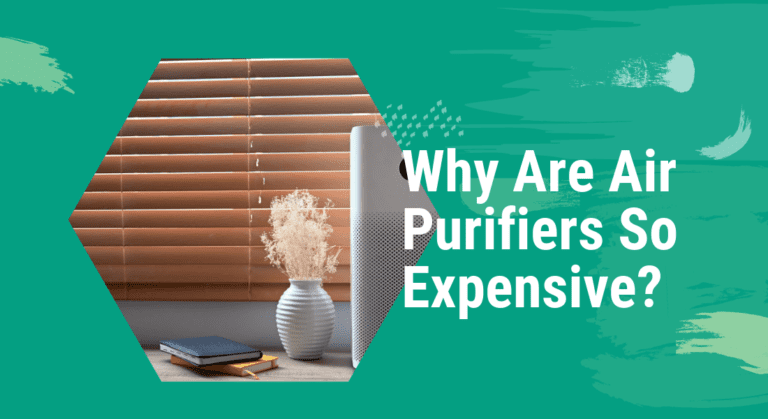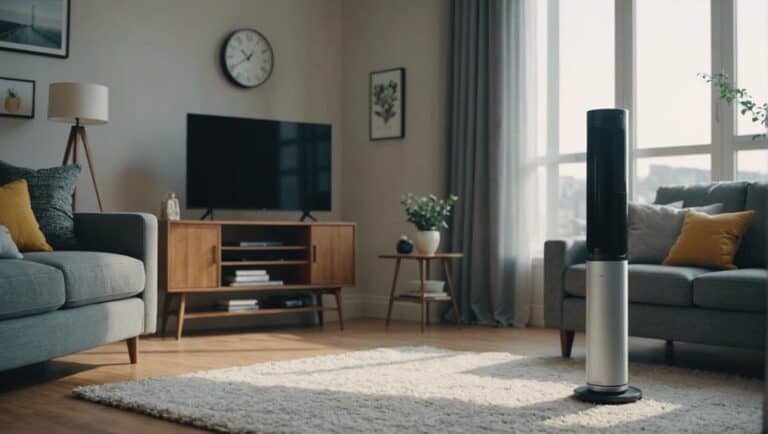Efficient Cleaning Guide: Mastering the Art of Cleaning Your Portable Air Conditioner
Cleaning your portable air conditioner is essential for maintaining its efficiency and ensuring the circulation of clean and cool air. However, many people find themselves baffled by the intricate process involved in properly cleaning these units.
In this comprehensive guide, we will walk you through the step-by-step process of masterfully cleaning your portable air conditioner to maximize its performance and prolong its lifespan. From removing dust and debris to disinfecting internal components, our efficient cleaning techniques will help you achieve a spotless unit that provides optimal cooling all summer long.
Whether you are a first-time owner or a seasoned user looking to refine your cleaning routine, this article is packed with expert tips and tricks on how to conquer the art of cleaning your portable air conditioner like a pro.
Get ready to transform your maintenance regime from mundane chore to triumphant achievement as we unveil the secrets behind achieving an impeccably clean portable air conditioner every time!
Understanding the Importance of Regular Cleaning
The Importance of Regular Cleaning
Regular cleaning is crucial for maintaining the efficiency and performance of your portable air conditioner.
- Improves Air Quality: Regular cleaning helps to remove dust, dirt, and other allergens that can accumulate in your air conditioner unit over time. This ensures that the air you breathe is clean and free from harmful particles.
- Prevents Health Issues: A dirty air conditioner can become a breeding ground for bacteria and mold, which can lead to respiratory problems and allergies. By regularly cleaning your portable AC, you decrease the risk of these health issues.
- Enhances Cooling Efficiency: When an air conditioner is clogged with debris, it has to work harder to cool the room. By regularly cleaning the filters, coils, vents, and other components of your portable AC unit, you ensure optimal cooling efficiency.
Cleaning your portable air conditioner not only extends its lifespan but also improves indoor air quality while enhancing its performance. Make sure to follow our efficient cleaning guide for mastering the art of keeping your portable AC in pristine condition!
Gathering the Necessary Tools and Supplies
Gather the Necessary Tools and Supplies
- Before you start cleaning your portable air conditioner, gather all the necessary tools and supplies to ensure a smooth process.
- You will need a few basic items such as a vacuum cleaner with a brush attachment, screwdrivers (both flathead and Phillips), a clean cloth or sponge, mild detergent or cleaning solution, and warm water.
- It is also advisable to have some gloves on hand to protect your hands from any dirt or residue that may be present in the unit.
Tools and Supplies Checklist:
- Vacuum cleaner with brush attachment
- Screwdrivers (flathead and Phillips)
- Clean cloth or sponge
- Mild detergent or cleaning solution
- Warm water
- Gloves
By having these tools ready, you can efficiently proceed with the cleaning process without any interruptions or delays.
Step 1: Cleaning the Exterior Surfaces
Cleaning the Exterior Surfaces
To begin cleaning your portable air conditioner, start with the exterior surfaces. Use a soft cloth or sponge dampened with mild soap and water to wipe away any dust or dirt. Be sure to avoid using abrasive cleaners that could damage the unit’s finish.
Next, carefully remove the front grille by unscrewing any screws or clips holding it in place. Wipe down both sides of the grille with a cloth dipped in soapy water, then rinse and dry thoroughly before reattaching.
If there are stubborn stains on the exterior surfaces, try using a vinegar solution (one part vinegar to two parts water) as a natural cleaner. Simply dip your cloth into this mixture and gently scrub until clean.
Remember to always disconnect the power supply before starting any cleaning process for safety reasons. Additionally, make sure all surfaces are completely dry before reconnecting power to prevent electrical hazards. By following these steps, you’ll be able to efficiently clean your portable air conditioner’s exterior without hassle.
Step 2: Removing and Cleaning the Air Filters
Removing and Cleaning the Air Filters
- Turn off your portable air conditioner: Before removing the air filters, make sure to turn off your portable air conditioner and unplug it from the power source to avoid any electrical accidents.
- Locate the air filter compartment: Most portable air conditioners have a visible filter compartment that can be accessed by opening a panel or removing a cover. Refer to your user manual if you’re unsure where to find it.
- Remove the filters carefully: Gently slide out the air filters from their housing, being mindful not to damage them in the process.
- Inspect for dirt and debris: Take a close look at each filter and check for accumulated dust, dirt, or other particles that may obstruct airflow.
- Clean the filters: To clean reusable filters, rinse them with warm water and mild soap under a faucet or in a basin until all dirt is removed. Make sure they are completely dry before reinserting them into the unit.
- Replace disposable filters: If you have disposable filters, discard them appropriately and replace them with new ones according to manufacturer instructions.
- Reinstall: Once cleaned or replaced, gently slide back in the air filters into their compartments.
- Regular maintenance tip: It’s recommended to clean your air filters every month during periods of heavy use to keep your portable air conditioner running efficiently.
Step 3: Cleaning the Evaporator Coils and Condenser Fins
Cleaning the Evaporator Coils
To clean the evaporator coils of your portable air conditioner, you will need a soft brush and a mixture of warm water and mild soap. Start by turning off and unplugging the unit for safety. Then, remove the front cover to access the coils. Carefully brush away any dust or debris from the coils, being gentle to avoid bending them. Once that is done, use a damp cloth soaked in the soapy water solution to wipe down the coils thoroughly.
Cleaning Condenser Fins
Cleaning the condenser fins is another important step in maintaining your portable air conditioner’s efficiency. These delicate fins are located on the back of your unit, behind a metal grid or grill-like cover. First, make sure to turn off and unplug your air conditioner before proceeding with cleaning. Then, gently vacuum out any loose dirt or dust using a vacuum cleaner hose attachment. Next, use a fin comb or straighten any bent fins carefully as this can improve airflow and overall performance.
Recommended Maintenance Frequency
To keep your portable air conditioner running efficiently, it is best to clean both these components at least once every three months or more frequently if you live in an area with high levels of airborne contaminants such as pollen or pet dander. Regular cleaning not only improves cooling performance but also helps extend the lifespan of your appliance by preventing clogs and reducing strain on internal parts.
Step 4: Disinfecting the Internal Components
Disinfecting the Internal Components
Before proceeding with disinfection, make sure to unplug the portable air conditioner and turn off all power sources.
- Remove and clean the filter: Gently remove the filter from the unit and wash it with warm soapy water. Rinse thoroughly and let it dry completely before reattaching.
- Use a disinfectant spray: Spray a disinfectant specifically designed for air conditioners onto a microfiber cloth or sponge.
- Wipe down internal surfaces: Carefully wipe down all visible internal surfaces of the portable air conditioner, paying extra attention to areas that accumulate dust and debris such as fan blades, coils, vents, and condenser fins.
- Allow proper drying time: After cleaning, leave the unit in an open area for at least 15 minutes or until all disinfected components are fully dry.
By regularly disinfecting your portable air conditioner’s internal components using these steps, you can ensure that your unit not only cools but also provides cleaner indoor air quality for you and your loved ones to breathe comfortably. Remember to always refer to the manufacturer’s instructions for specific cleaning guidelines unique to your model.
For further tips on maintaining an efficient cooling system through thorough cleaning techniques continue reading our Efficient Cleaning Guide: Mastering The Art Of Cleaning Your Portable Air Conditioner blog post!
Step 5: Cleaning the Water Drainage System
Cleaning the Water Drainage System
To ensure the optimal performance of your portable air conditioner, it is essential to clean the water drainage system regularly. Here’s how you master this step:
- Disconnect and empty: Start by disconnecting your portable air conditioner from its power source and then empty any remaining water in the drain pan.
- Remove and inspect: Next, remove the drain plug or cap located at the bottom of your unit’s backside. Inspect it for any debris or blockages that may be obstructing proper drainage.
- Clean with mild detergent: Using a mild detergent mixed with warm water, clean both the drain pan and the removed plug or cap thoroughly. This will help remove any accumulated dirt, dust, or residues that could interfere with efficient drainage.
- Rinse and dry: Rinse all cleaned parts diligently with plain water to eliminate any traces of detergent. Once washed, allow them to dry completely before reassembling them onto your unit.
By following these simple steps on cleaning your portable air conditioner’s water drainage system regularly, you can ensure it functions efficiently throughout its lifespan while maintaining optimal indoor comfort levels for yourself and those around you.
Step 6: Reassembling and Restarting the Unit
Reassembling and Restarting the Unit
- Reassemble the unit: Carefully place the cleaned components back into their respective positions within the portable air conditioner. Make sure to align them correctly to avoid any damage or malfunctions.
- Secure all connections: Double-check that all electrical and hose connections are securely tightened. Loose connections can lead to leaks or a decrease in performance.
- Restarting the unit: Plug in your portable air conditioner and turn it on using the power button or control panel. Allow it a few minutes to start up before adjusting the settings according to your desired cooling preferences.
- Monitor for proper operation: Observe how well your portable air conditioner is functioning after reassembly and restarting it, ensuring that cool air is being produced and circulated effectively throughout the room.
- Regular maintenance schedule: Schedule regular cleaning sessions for your portable air conditioner every 1-2 months, depending on usage, to maintain its efficiency and prolong its lifespan.







One Comment